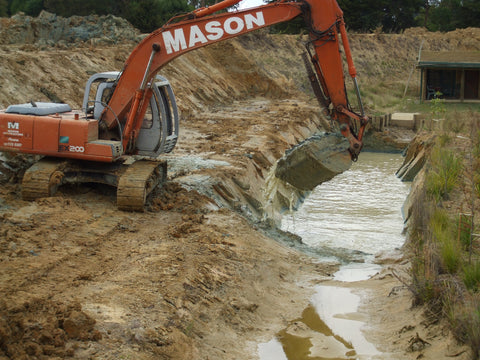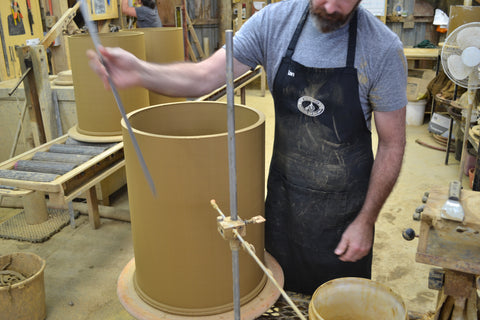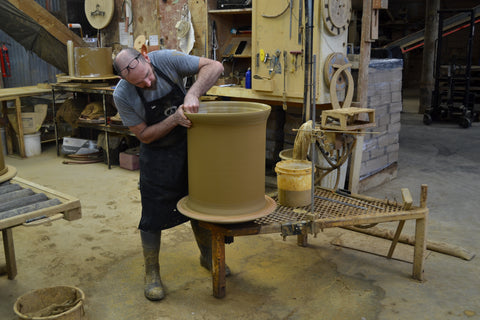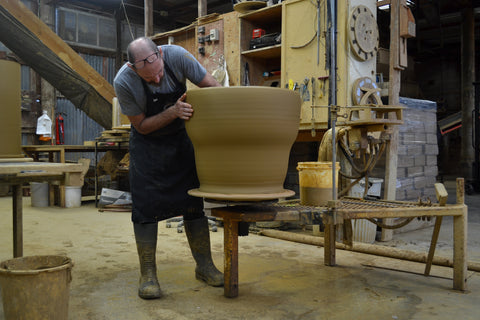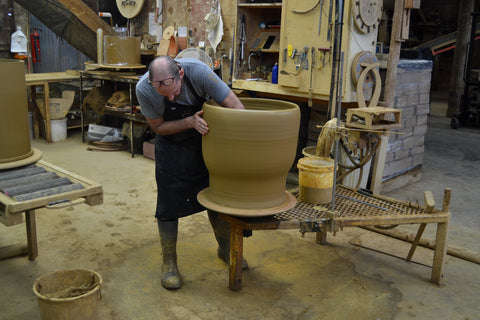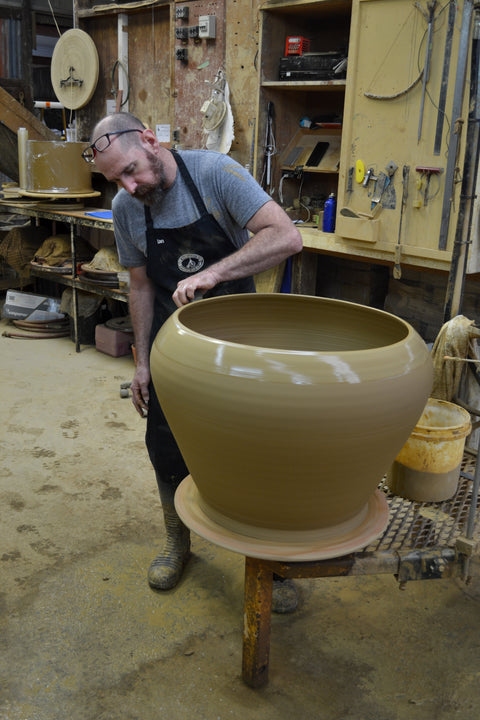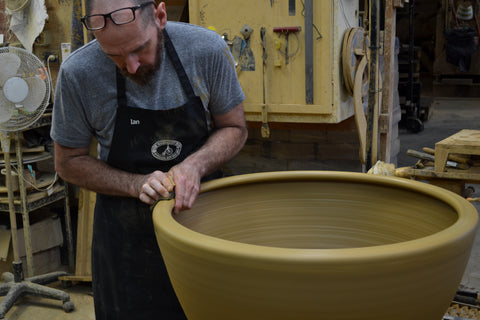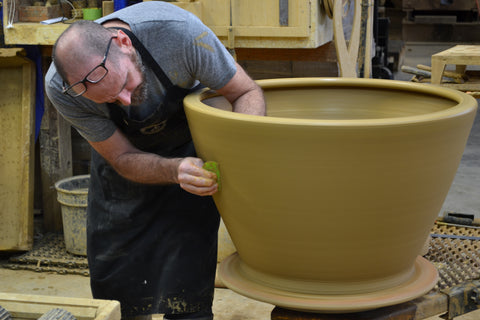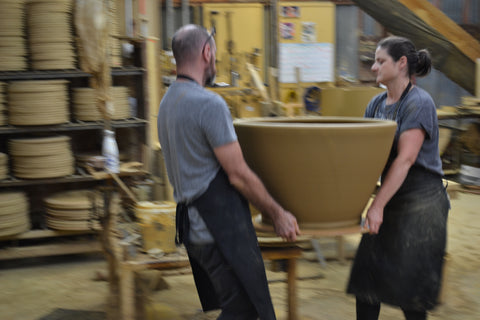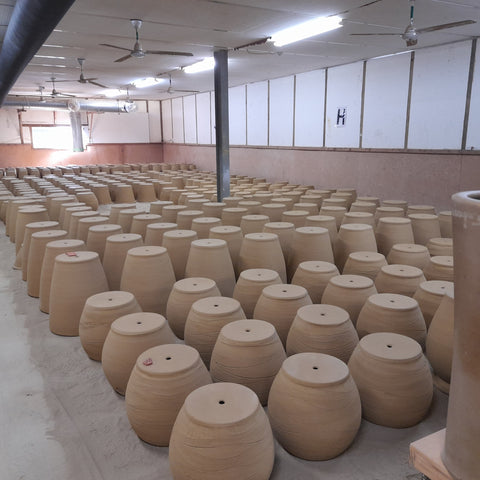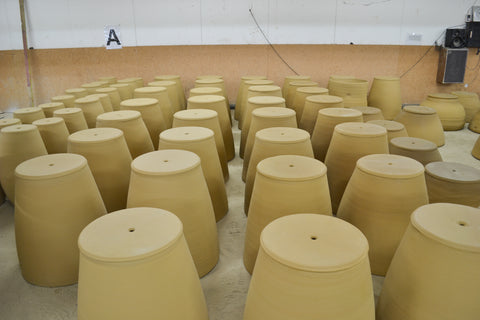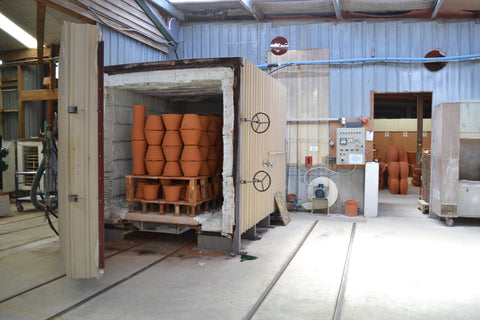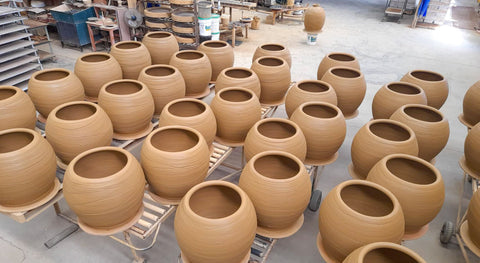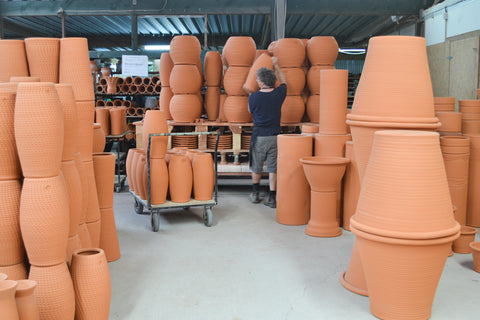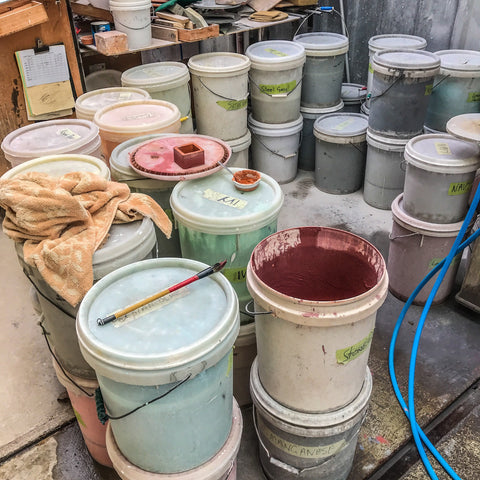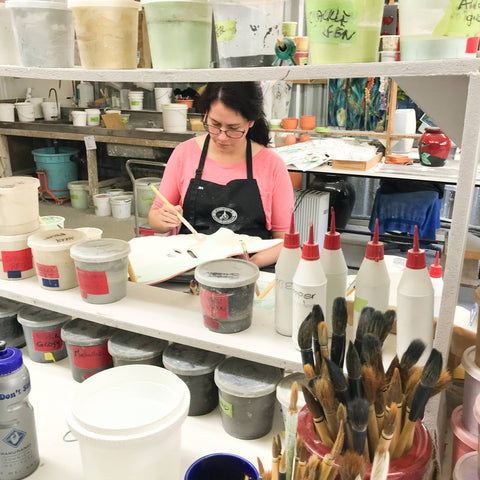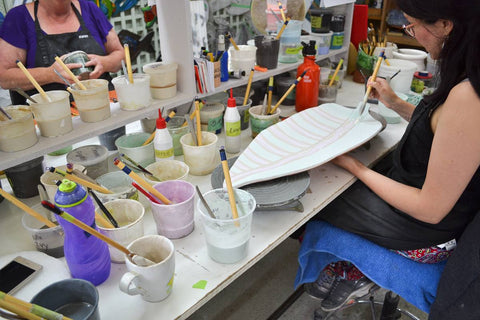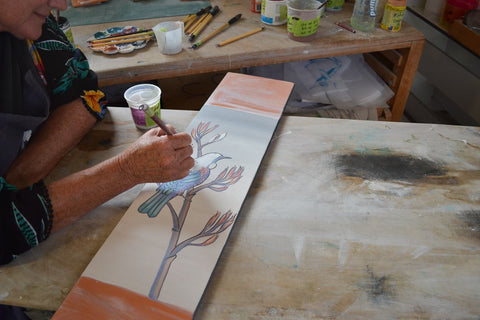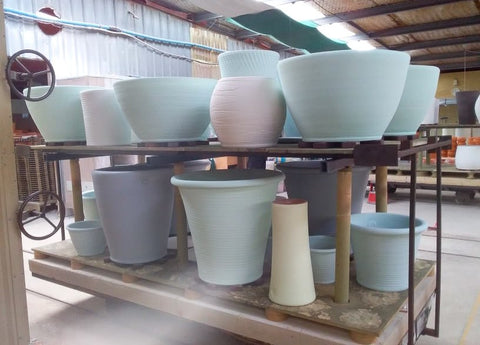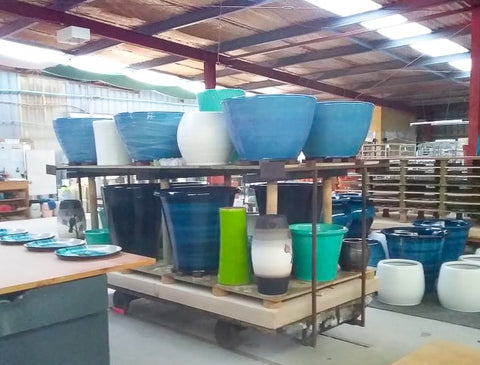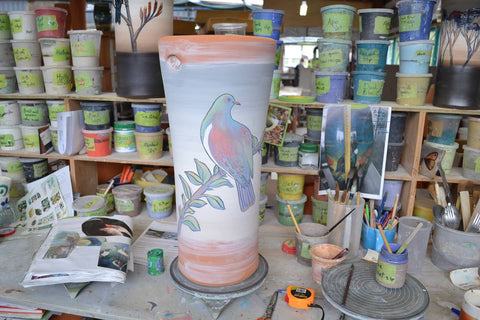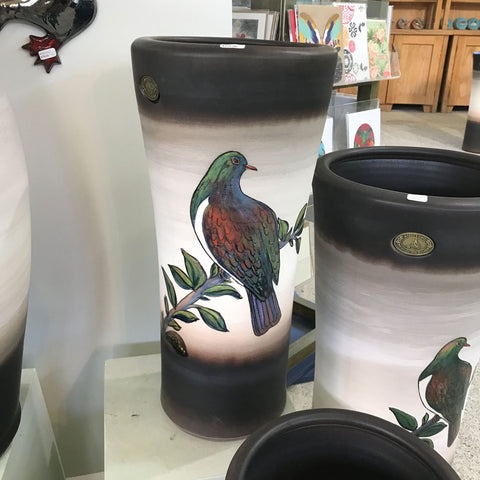Our Process
Morris & James pottery is made with love and care. It takes up to three months to produce one masterpiece from start-to finish by expert artisans who are proud of their workmanship with this old world craft. It's a process that includes hand throwing, drying, bisque firing, glazing and glaze firing. We start with clay we've harvested ourselves from our onsite clay pit.
The Clay
We harvest clay most summers and store it as a fine powder for use throughout the year. We've achieved a unique blend that's perfect for large scale pots - smooth yet still richly textured thanks to our special mix including black sand which helps ensure a high quality finished product.

